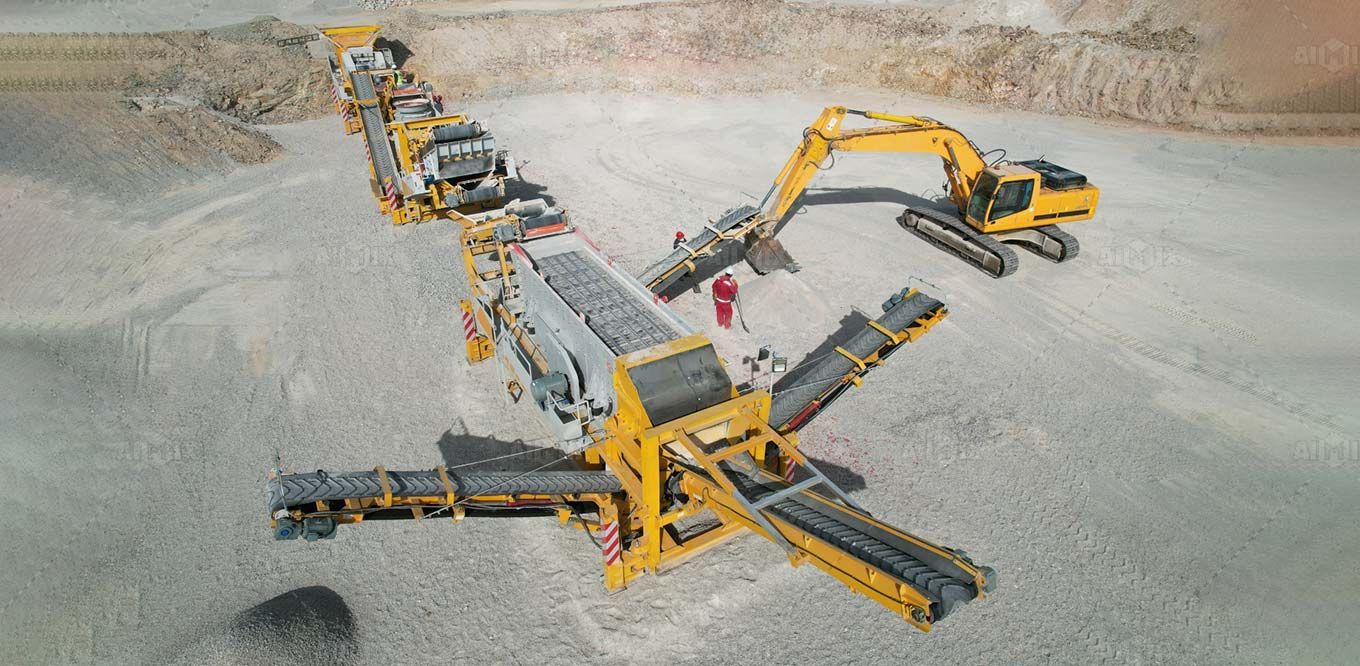Strategic Approaches and Equipment Selection for Crushing Limestone in Quarry and Mining Operations
- By AIMIX Group
- •
- 19 Jun, 2024
- •
The process of crushing limestone in quarry and mining operations requires careful consideration of several factors to ensure efficient and cost-effective production. From selecting the appropriate equipment to designing the layout, each step plays a crucial role in maximizing the output while minimizing operational costs and environmental impact.
1. Factors Influencing Equipment Selection
1.1 Geological Characteristics of the Limestone Deposit
Before selecting crushing equipment, understanding the geological characteristics of the limestone deposit is essential. Factors such as hardness, abrasiveness, and moisture content dictate the type of crushing plant equipment required. Harder limestone may necessitate more robust crushers, while high moisture content can affect crushing efficiency and equipment wear.1.2 Production Requirements and Output Specifications
Production requirements, including desired output size and capacity, influence equipment selection. Primary crushers like jaw crushers are suitable for initial crushing stages, while cone or impact crushers may be required for secondary or tertiary crushing to achieve the desired product size. Equipment must match production goals to ensure optimal efficiency and profitability.2. Key Equipment for Limestone Crushing
2.1 Primary Crushers: Jaw and Gyratory Crushers
Primary crushers handle large pieces of limestone extracted from quarries. Jaw crushers are versatile and suitable for various hardness levels, offering high throughput and reliable operation. Gyratory crushers excel in handling abrasive materials and have higher capacity, making them ideal for large-scale operations.2.2 Secondary and Tertiary Crushers: Cone and Impact Crushers
Secondary and tertiary crushers refine crushed limestone into finer grades. Cone crusher provide uniformity in particle size and shape, crucial for producing high-quality aggregates. Impact crushers are versatile for shaping applications and excel in producing cubical aggregates suitable for concrete production.Get more about crusher details here: https://aimixgroup.com/stone-crusher-plants/aggregate/.3. Design Considerations and Operational Efficiency
3.1 Optimal Equipment Layout and Configuration
Efficient equipment layout enhances productivity and reduces operational costs. Placing crushers close to the quarry face minimizes hauling distances, optimizing truck loading and reducing fuel consumption. Well-designed conveyor systems facilitate seamless material flow, ensuring continuous production and minimizing downtime.3.2 Maintenance and Safety Protocols
Regular maintenance is critical for prolonging equipment lifespan and preventing costly breakdowns. Implementing proactive maintenance schedules, including lubrication, wear part replacement, and inspections, ensures gravel crushing machine operates at peak efficiency. Safety protocols, such as guarding and training programs, protect personnel and maintain compliance with regulatory standards. In quarry and mining operations, strategic approaches to equipment selection and operational design are paramount for successful limestone crushing. By understanding geological characteristics, production requirements, and implementing efficient equipment layouts, operators can optimize productivity and profitability while maintaining a safe working environment.Choose AIMIXAIMIX Global Products
- Stone Crusher
- rock crusher
- Limestone Crusher
- granite crusher
- quartz crusher
- quarry crusher
- Gravel Crusher
- mobile crusher plant
- stone crusher plant
- crushing plant
- mobile impact crusher
- mobile jaw crusher
- mobile crusher
- mobile cone crusher
- mini self loading concrete mixer
- self loading mobile concrete mixture
- self loading concrete mixer for sale
- self loading concrete mixer truck
- self loading cement mixer
- asphalt plant for sale
- asphalt mobile plant
- drum mix plant
- mini asphalt plants for sale
- portable asphalt mixing plant
- asphalt hot mix plant
- batching plant manufacturers
- concrete plant for sale
- small concrete batch plant
- mini cement plant
- mobile concrete plant
- portable batch plant
- stationary concrete batching plant
- ready mix concrete plant
- how does a batching plant work
- concrete batching plant price
- ready mix concrete plant in bangladesh
- concrete batching plant in uae
- concrete batching plant indonesia
- concrete batching plant malaysia
- concrete batching plant for sale australia
- concrete batching plant Philippines
- concrete batching plant for sale UK
- concrete batching plant in saudi arabia
- concrete pump
- concrete mixer with pump
- mobile concrete pump
- portable concrete pump
- concrete trailer pump
- mini concrete pump
- small concrete pumps
- diesel concrete pump
- electric concrete pump
- hydraulic concrete pump
- dry mix mortar plant
- small dry mortar plant
- automatic dry mortar plant equipment
- big dry mortar plant
- dry mortar production line manufacturer
- dry mortar production line
- Tile adhesive manufacturing plant

